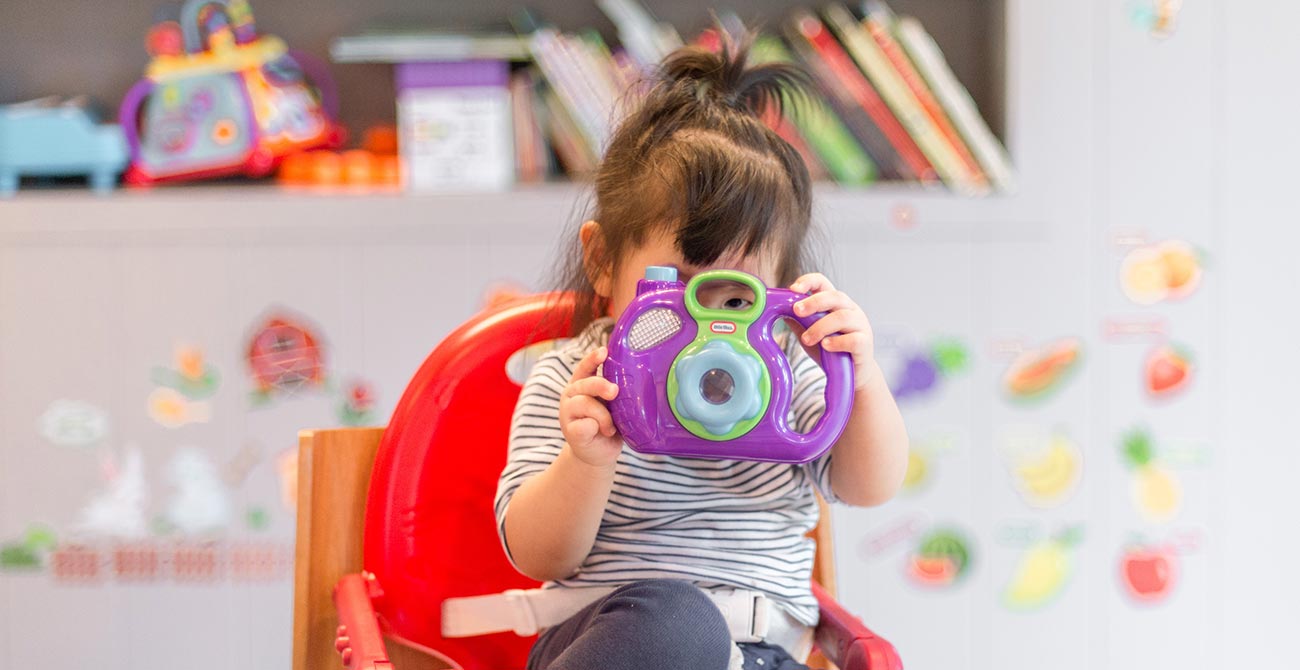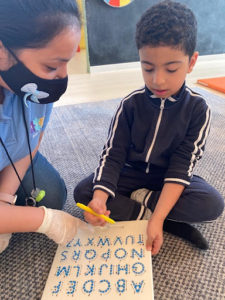
How to Help Your Child Stay Focused and Organized Through Sensory Integration
With Occupational Therapist, Vritika Rohatgi, MOT | BOT | RBT

The main goal of a sensory diet is to prevent sensory and emotional overload by meeting the nervous system’s sensory based needs. Understanding a child’s sensory profile and the activities which create calmness and regulation can really help when a child either feels underwhelmed or overwhelmed.
Engaging children in sensory experiences on a regular schedule can support focus, attentiveness and interaction. Children may feel less anxious when they feel comfortable.
An occupational therapist (OT) usually designs a sensory diet. Parents and caregivers can then use the tailored activities at home; teachers and educational assistants can use it at school. The reason it is recommended to consult with an OT who has experience with sensory processing issues is because one the trickiest aspects of sensory difficulty is recognising when a child is overactive or under reactive in any given moment, then adjusting sensory input to meet them where they are, and providing the right challenge to help them move forward into a “just right” state of being.
Sensory integration therapy is used to help children learn to use all their senses together – that is, touch, smell, taste, sight and hearing. A sensory diet is a tailored plan of physical activities and accommodations designed to meet a child’s sensory needs.
Different Sensory Systems:
- Visual- is responsible for seeing.
- Auditory- responsible for hearing.
- Tactile- responsible for processing touch information from the body. The tactile system is extremely important in kids with sensory processing disorders. Many individuals with the disorder have tactile symptoms such as tactile defensiveness or under-responsivity to touch and pain. The touch system is one of the three foundational systems used in sensory integration treatment.
- Gustatory- responsible for the sense of taste.
- Olfactory- responsible for processing smell.
Recommended activities for a sensory diet
Certain activities address specific sensory systems. Activities will also vary based on age, skill level, and other comorbidity. Here are some examples of activities that can be used as part of a sensory diet:
Proprioception
Proprioceptive input can be achieved through lifting, pushing, and pulling heavy objects. Some ideas are:
- Pushing a stroller or cart.
- Pulling a wagon filled with objects.
- Carrying a backpack.
- Playing hopscotch.
- Swimming.
- Tight hugs.
- Animal walks.
Vestibular
Vestibular input (sense of movement) is created by any type of movement such as spinning or swinging. Some ideas are:
- Swinging on a swing.
- Lying in a hammock.
- Rolling.
- Jumping jacks.
- Going down on slides.
- Riding a bike/tricycle.
Tactile
The tactile sense detects light touch, deep pressure, texture, temperature, vibration, and pain. Some ideas are:
- Drawing in sand or salt.
- Hand massage.
- High fives.
- Play with therapy putty, squeeze balls, a band to pull on.
- Crocheting, knitting or sewing.
- Messy play with shaving cream or foamy soap.
-
Sitting/ playing on different textured mats
- Using different textured books
Auditory
Auditory input is what we hear and how we listen. Some ideas for calming and organising auditory input are:
- Listening to music.
- Listening to sounds in nature.
- Using noise cancelling headphones to dampen sound.
- Playing a musical instrument.
- Listening to running water.
- Simplify language when giving instructions to your child or in the classroom.
- Give a verbal or visual warning before loud sounds (like fire drills) to cover ears.
Visual
Some environments can be too visually stimulating such as classrooms with busy bulletin boards, brightly lit rooms, bright colors or busy patterns on the wall or curtains. To reduce visual stimulation:
- keeps areas organised and clutter free
- store items in bins or boxes
- avoid using fluorescent lighting
- use neutral paint colors
Smell
Smelling certain odours can stimulate, calm, or send a person into sensory overload. When it comes to smells, think about:
- exploring calming scents to find preference. Lavender, vanilla, jasmine and rose are examples of calming scents.
- sniffing different herbs and spices.
- some people don’t like scents at all. Look for unscented products such as detergents, soap or shampoo.
Taste
When it comes to taste, experiment with different flavours. Oral sensory processing not only involves taste, but tactile and proprioception too.
- Strong tastes can stimulate the under sensitive child.
- Involve children in food preparation to increase their likelihood of trying new foods.
- Offer crunchy foods such as raw veggies, popcorn, pretzels, apples for those who like to chew.
- For the child who likes to chew, use chewy jewellery.
- Other ideas for chewy foods are fruit leather, beef jerky, marshmallows or raisins.
- For children who like to suck or lick things, try popsicles, ice cubes, or drinking through a straw.
These are just a few of the optional activities that can be used to create a sensory diet. To have a look at some examples, click here. It is important to work with an experienced OT who not only can create a sensory diet, but can also assist with visual support and scheduling the activities throughout the day.
If you feel your child faces a challenge with their motor skills, we urge you to consult an occupational therapist who can customise a plan to improve your child’s behavior. You can get in touch with us on 39006065 or drop us an email on info@reachabatherapy.com for a complimentary consultation.

